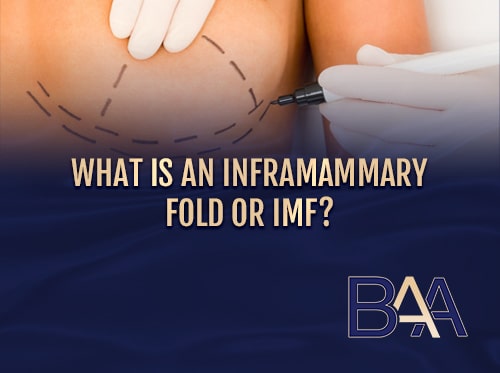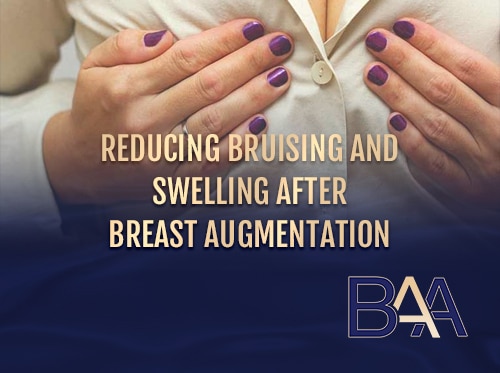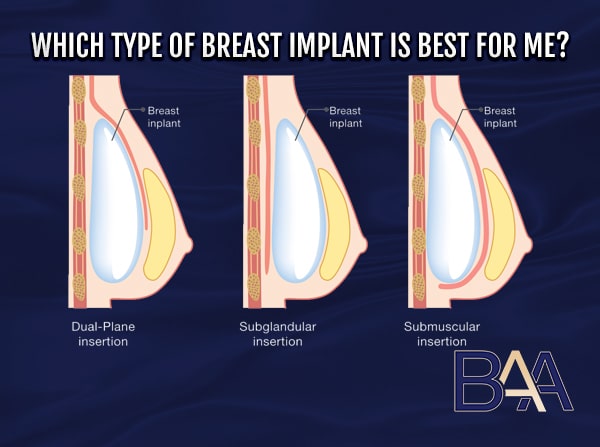Types of Breast Implants for Different Body Types
Breast augmentation is one common cosmetic technique that helps women to improve their breasts’ shape and size. Understanding the different breast implants and how best to choose one based on your body type and preference is very important. For most patients, this process can be overwhelming.
Today, we will examine different breast implants available for you. This will include the size, form, texture, profile, and alternative for placement. We’ll also examine different body types and what implants best suit them. If you’re considering breast augmentation in Sydney, this article is for you. Keep reading to learn more and make an informed decision.
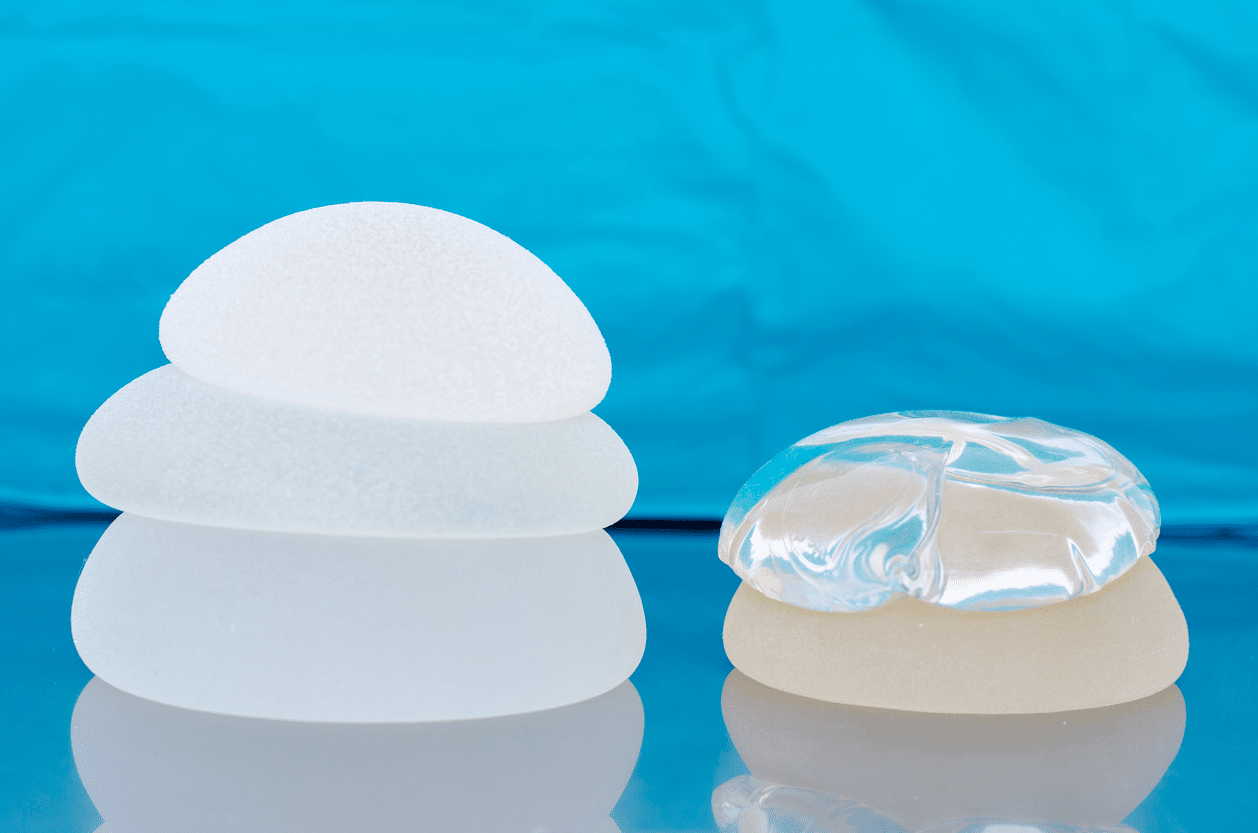
What Determines The Final Result?
When considering breast augmentation, it is crucial to understand that the choice of breast implant is one factor that contributes to the final outcome. The desired results play a paramount role in the decision-making process.
During the consultation, Dr. Beldholm often poses a few fundamental questions; “What results are you looking for? Are you aiming for a specific cup size or particular shape?” Rather than fixating on the choice of implant, he emphasizes the importance of focusing on the desired results.
Once you clarify the desired outcome, the subsequent decisions revolve around selecting the appropriate surgical technique and implants. The decision varies significantly based on whether someone desires a subtle natural look or a bigger but “fake” appearance.
Several factors come into play when determining the final results of breast augmentation. These include:
Breast Implant related Factors
Herein you’ll consider the shape, size, breast implant texture, and material.
- Shape: You’ll need to choose between round or teardrop-shaped implants. Round Implants provide fullness in the upper and lower poles, while teardrop implants mimic the breast’s natural shape.
- Size: This includes selecting the appropriate implant volume, measured in cubic centimetres (cc), to achieve the desired breast size. The patient should also consider body proportion, chest width, and existing breast tissue.
- Implant material: This involves choosing between silicone gel-filled or saline-filled implants. Silicone implants provide a more natural feel, while saline counterparts feel firm.
- Breast Implant texture: This involves deciding between smooth or textured surface implants. Note that macro-textured implants were banned in Australia since they pose a higher risk of BIA-ALCL.
Breast Augmentation Surgical Technique
There are three primary surgical techniques to choose from. These are:
- Submuscular placement (Under muscle): This technique positions the breast implant beneath the pectoralis major muscle. It provides additional tissue coverage, resulting in a more natural look, especially for women with minimal existing breast tissue.
- Subglandular placement (Over the muscle): The breast implant is positioned above the muscle but beneath the glandular breast tissue. It might suit women with adequate existing breast tissue and minimal sagging. Over the muscle often results in quicker recovery as compared to submuscular placement. It is, however, associated with slightly higher visible implant edges or rippling.
- Dual Plane Placement: This technique combines submuscular and subglandular placement. The upper portion of the implant is positioned beneath the muscle, providing additional coverage and a natural-looking upper pole. Conversely, the lower portion, sits beneath the glandular tissue, allowing for a more rounded lower breast contour.
Breast Characteristics
This factor mainly focuses on how your breast looks like. We can refactor this further into:
- Sagginess: Evaluating the degree of breast sagging or ptosis. Based on the severity, additional procedures such as a breast lift (mastopexy) may be recommended to achieve optimal results.
- Upper pole fullness: This involves accessing the desired level of fullness in the upper portion of the breasts. Implant selection and placement can influence the amount of upper pole fullness achieved.
- Natural breast size: Assessing the initial size of the breasts before augmentation. This helps determine the appropriate implant size and avoids an unnatural or disproportional outcome,
- Breast width: Evaluating the width, including the measurements, such as the base diameter, to ensure the chosen implant is suitable for width and projection.
- Areola size: Addressing any concerns regarding the size of the Areola. If desired, adjustments can be made during surgery to resize or re-shape the Areola.
Body Consideration
The major question here is, “What body type do you have? “You’ll need to consider the following.
- Body Type: Considering the overall body shape and proportions, including height, weight, and body and body mass index (BMI). This helps ensure that the chosen implant size harmonizes with the individual’s physique.
- Body Frame: Assessing the width of the shoulders, ribcage, and hips. These measurements help determine the appropriate implant dimensions to achieve a balanced and proportionate outcome.
By thoroughly discussing the desired outcome and considering these factors, Dr. Beldholm can develop a personalized approach that ensures optimal results for individuals seeking breast augmentation.
Understanding Body Types
Patients have different body variations. Therefore, before settling for a given type of breast implant, you’ll need to consider your body type. Each body type presents unique challenges and considerations.
Factors like breast tissue, chest dimensions, and overall body proportion are helpful when determining the right type, size, shape, and projections. So, what do we have?
Petite or Small Framed Body

Patients with a petite frame would do well with smaller-sized implants since they help maintain proportionality and achieve a “natural” breast appearance. Since silicone implants offer a softer texture and can mimic the natural breast better, they can work well with this body type.
Moreover, a moderate projection implant can help achieve balanced results without overwhelming the frame. An ideal size can range from 150cc to 200cc. However, this might also depend on what the patient wants. The ideal implant size and placement depend on the desired outcome. Smaller-framed individuals, A cup, seeking a slight increase in size, may benefit from the submuscular placement. However, larger-framed individuals or those desiring a significant increase might consider other factors, such as existing breast tissue and aesthetic preference.
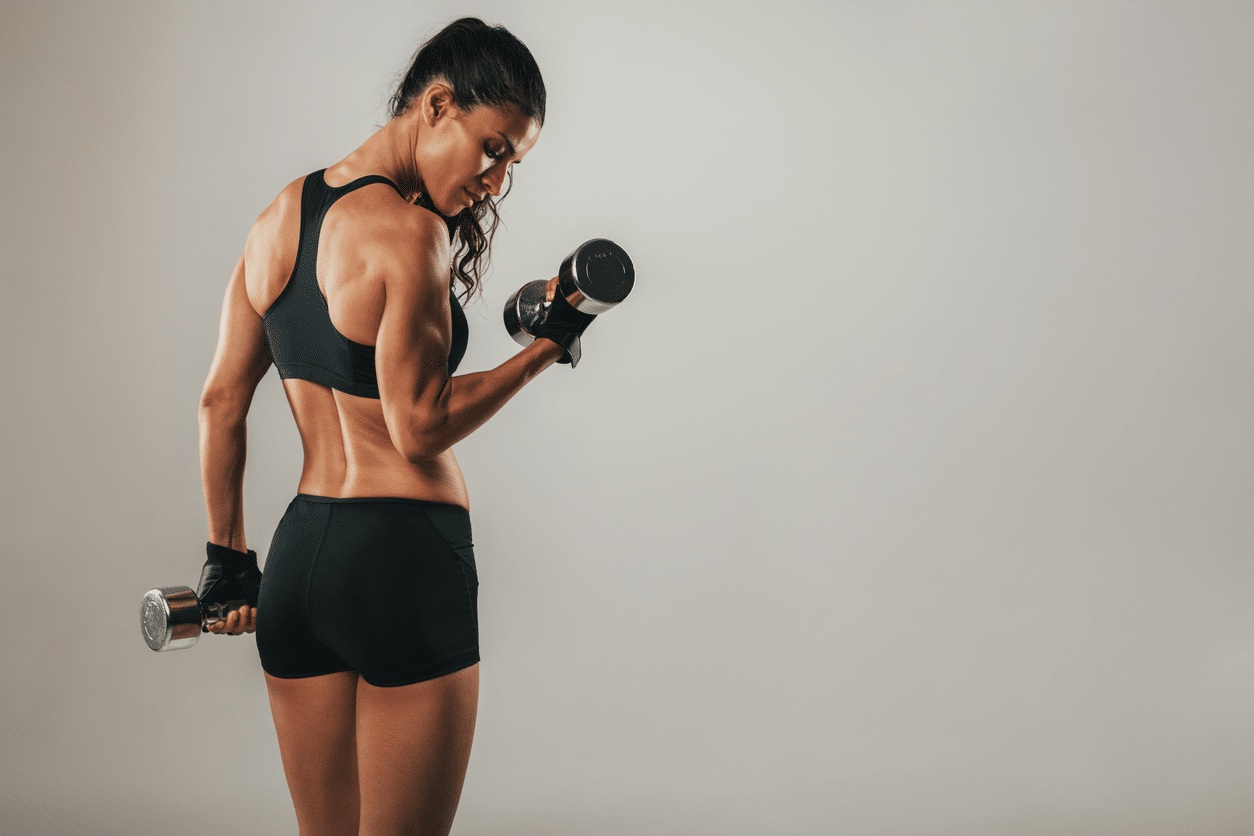
Athletic Body
Individuals with athletic bodies have lower body fat percentages and well-developed pectoral muscles. For a balanced outcome, a surgeon can use moderate-sized implants with a slightly wider base to maintain a fit and a proportionate look.
Since silicone implants are more natural-looking, they can also be considered for this body type. Many very fit women with A cup or small breasts have minimal natural breast tissue, resulting in limited coverage for the implant. Submuscular placement (or Dual plane) is typically recommended in these cases. Selecting an implant that fits the chest wall is crucial and requires customisation for each patient. Additionally, potential issues with muscle bands and distortions should be carefully considered.
Curvy Body Type
A curvy body usually has more existing breast tissue and natural curves. The main goal for breast augmentation surgery in curvy individuals is to enhance their current proportions and maintain a harmonious balance. Depending on individual preferences, both saline and silicone implants can do well.
Individuals need to choose an implant size that complements the existing curves and avoid excessive enlargement that may lead to an unnatural appearance. Ideally, above the muscle placement can yield better results as the implant moves more naturally with the breast tissue. However, in cases of large breasts with sagging, a breast lift may be necessary in addition to breast implants. The combination of a lift and implants can address both the size and position of the breasts, achieving a more desirable outcome.
Other Body Types
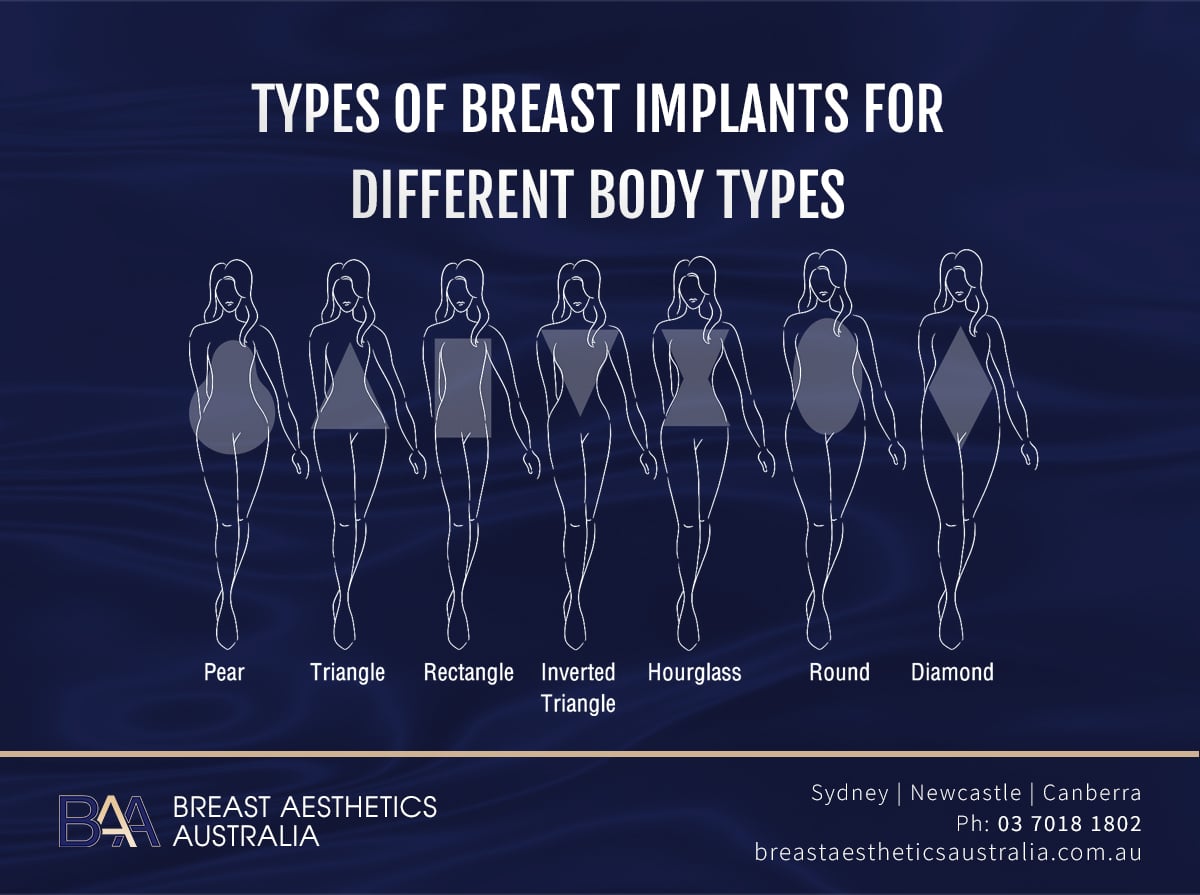
Apart from the three mentioned body types above, there are individuals with specific body shapes. These include banana-shaped, pear-shaped, apple-shaped, and hourglass figures.
The focus may be on achieving upper and lower body balance. Implants with moderate projection and appropriate volume can help create a more symmetrical silhouette for peer-shaped individuals.
Round-shaped individuals may benefit from implants that add fullness and roundness to the upper portion of the breast.
Hourglass figures often aim to maintain their natural curves. Therefore, implants that enhance the overall proportion while preserving the waist-to-hip ratio may be suitable.
Women with Rectangle-shaped body types tend to have a similar width in their shoulders, waist, and hips, creating a more straight-lined shape. As such, the focus during breast augmentation in Newcastle is to add volume and fullness to the breasts while maintaining the overall balance.
What to Consider When Choosing A breast implant
As far as body implant is concerned, there are some factors worth considering when choosing the right breast implant. These include:
Chest Breadth and Diameter
To prevent unnatural projection or a wide-set appearance, the breadth and diameter of the chest are essential factors in choosing the right implant size. Therefore, patients must schedule a detailed consultation with an experienced FRACS surgeon to determine the optimal implant size that harmonises their unique physique.
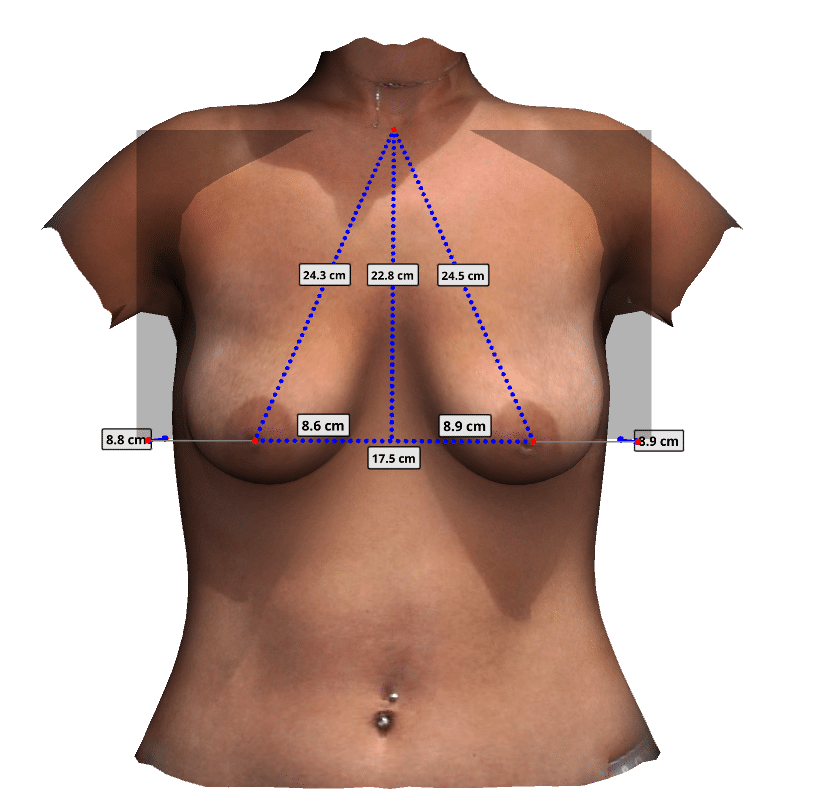
Breast Base Width
Determining the breast base width aids in making implant selections that complement the natural breast shapes and give a unified appearance. Breast base width refers to the diameter of the actual breast extending from the medial (inner) to the lateral(outer) aspect of the breast.
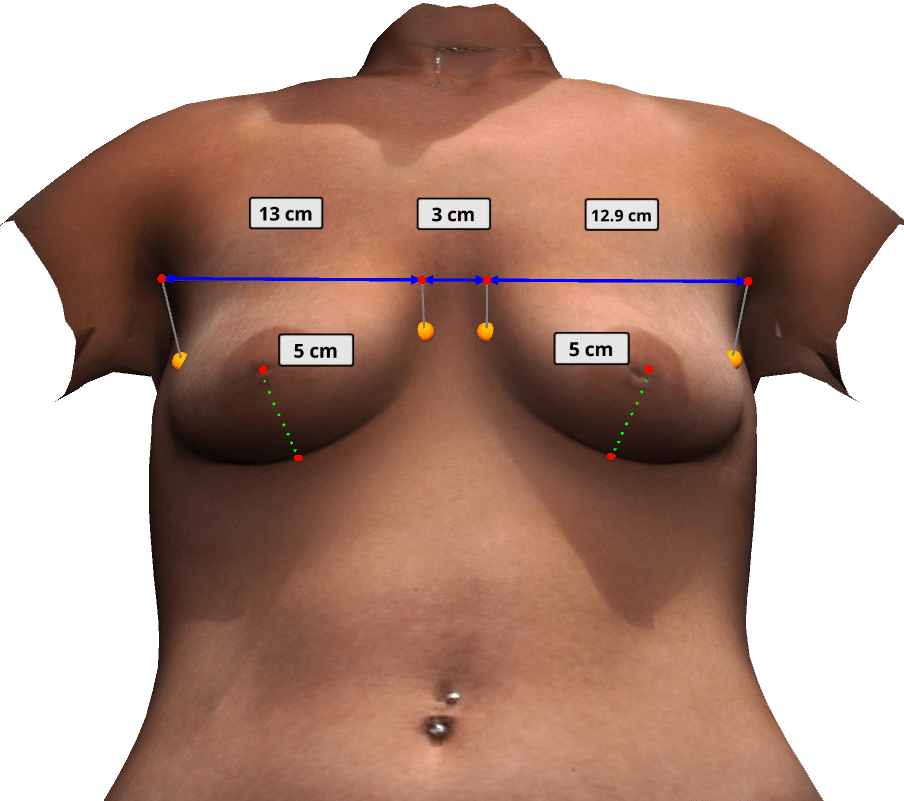
Projection and Volume
Projection refers to how far the breasts project outward from the chest wall. On the other hand, volume relates to the overall size and fullness of the breast. To achieve this, the surgeon will need to consider individual aesthetic goals, body proportions, and existing breast tissue to determine the appropriate level of projection and volume to achieve the desired outcome.
Does Breast Implant Shape Matter?
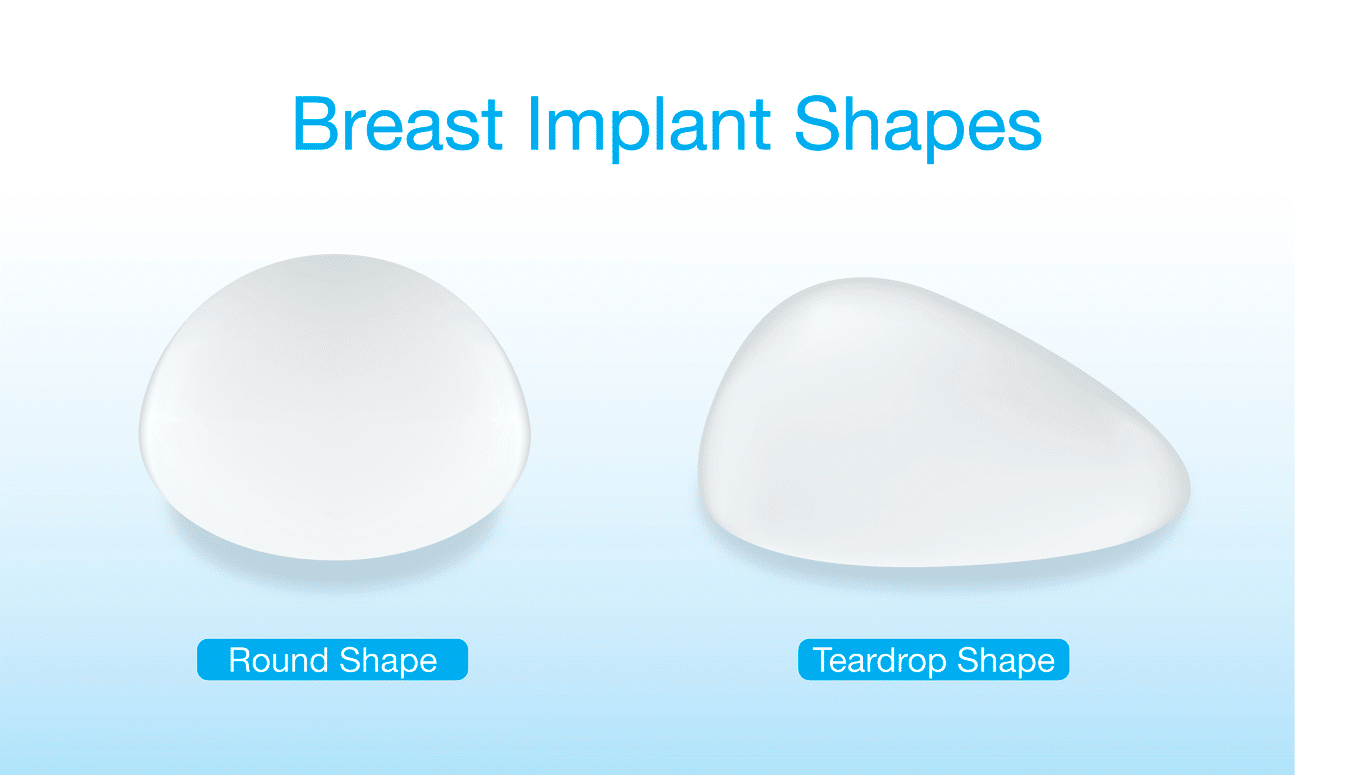
Yes! Think of it this way: you already consulted with your surgeon and discussed different types of breast implants, and you know which suits you best. In the process, you’ll need to choose ideal breast implant shapes that match your body type. This might be overwhelming as well. But what options do you have?
Teardrop or Anatomical Implants
This shape features a teardrop form that resembles the slope of the breast. Patients with minimal breast tissue, in particular, offer a more realistic effect. It, however, calls for careful placement during breast implant surgery to avoid implant rotation. Micro-textured implants are used to minimise this risk.
Round Implants
These are spherical implants that provide the breasts fullness and cleavage. They are adaptable and can improve the breasts’ upper and lower poles. Since a round implant is symmetrical, it is less likely to rotate.
Your aesthetic goal, preferred incision location, and breast implant placement will contribute highly to the kind of breast implant that suits you best.
What Happens When You Choose The Wrong Implants for Your Body Type?
The whole concept of this text is to help you understand the different breast implant types and why it is crucial to choose the right one for your body type. We have looked at the breast implant options, but now the question remains, what if you choose the wrong implant for your body type?
Some of the potential consequences of choosing the wrong implant for your body type include the following:
Unnatural Appearance
You will likely get unnatural results if you choose too small or too large implants. For example, very large implants can make the implants appear disproportionate to the rest of the body, causing an unbalanced or top-heavy look. On the other hand, too small implants may fail to provide the desired volume and fullness, resulting in a less satisfying outcome.
Poor Symmetry
Implants that are not adequately sized or placed can make one breast look significantly larger or different in shape compared to the other. Ideally, achieving balance and symmetrical results is essential for a natural-looking outcome.
Discomfort and Pain
Choosing a huge implant will strain the breast tissue, causing chest, shoulder, and back discomfort. They may also put so much pressure on the skin and the breast tissue, potentially leading to stretching, sagging, or more.
Rippling and Wrinkling
If one chooses saline implants with inadequate soft tissue coverage, there is a higher chance of rippling and wrinkling. This is more likely in individuals with thinner breast tissue or minimal body fat. Rippling and wrinkling can create a visible and unnatural texture on the surface of the breasts, compromising the desired aesthetic outcome.
Revision Surgery
This is ideally one state that you might not want to get to. It could cost you both time and money. Revision surgery can involve removing or replacing the implants, adjusting the implant size, or addressing any complication or aesthetic concern that may have arisen. Revision surgeries are complex and come with additional costs.
To avoid these consequences, it is essential to consult with a qualified and experienced FRACS surgeon, who will assess your body type, understand your aesthetic goal and provide expert recommendations on the appropriate implant for your specific need.
Talk to Dr. Bernard Beldholm
Dr. Bernard Beldholm offers individualised consultations catered to your individual needs and objectives. The main aim of such consultations is to walk you through every step of the process and help you understand the different breast implant types available and how they work. He will also assess your body type and recommend the right implant. So, don’t hesitate to reach out and book your session today.
References
- Swanson, E. (2020b). Prospective Study of Saline versus Silicone Gel Implants for Subpectoral Breast Augmentation. Plastic and Reconstructive Surgery. Global Open, 8(6), e2882.
- Rocco, N., Rispoli, C., Moja, L., Amato, B., Iannone, L., Testa, S., Spano, A., Catanuto, G., Accurso, A., & Nava, M. B. (2016c). Different types of implants for reconstructive breast surgery. The Cochrane Library, 2016(5).
- Adams, W. M., & McKee, D. (2016b). Matching the Implant to the Breast. Plastic and Reconstructive Surgery, 138(5), 987–994.
- Handel, N., Garcia, M. E., & Wixtrom, R. N. (2013). Breast Implant Rupture. Plastic and Reconstructive Surgery, 132(5), 1128–1137.
